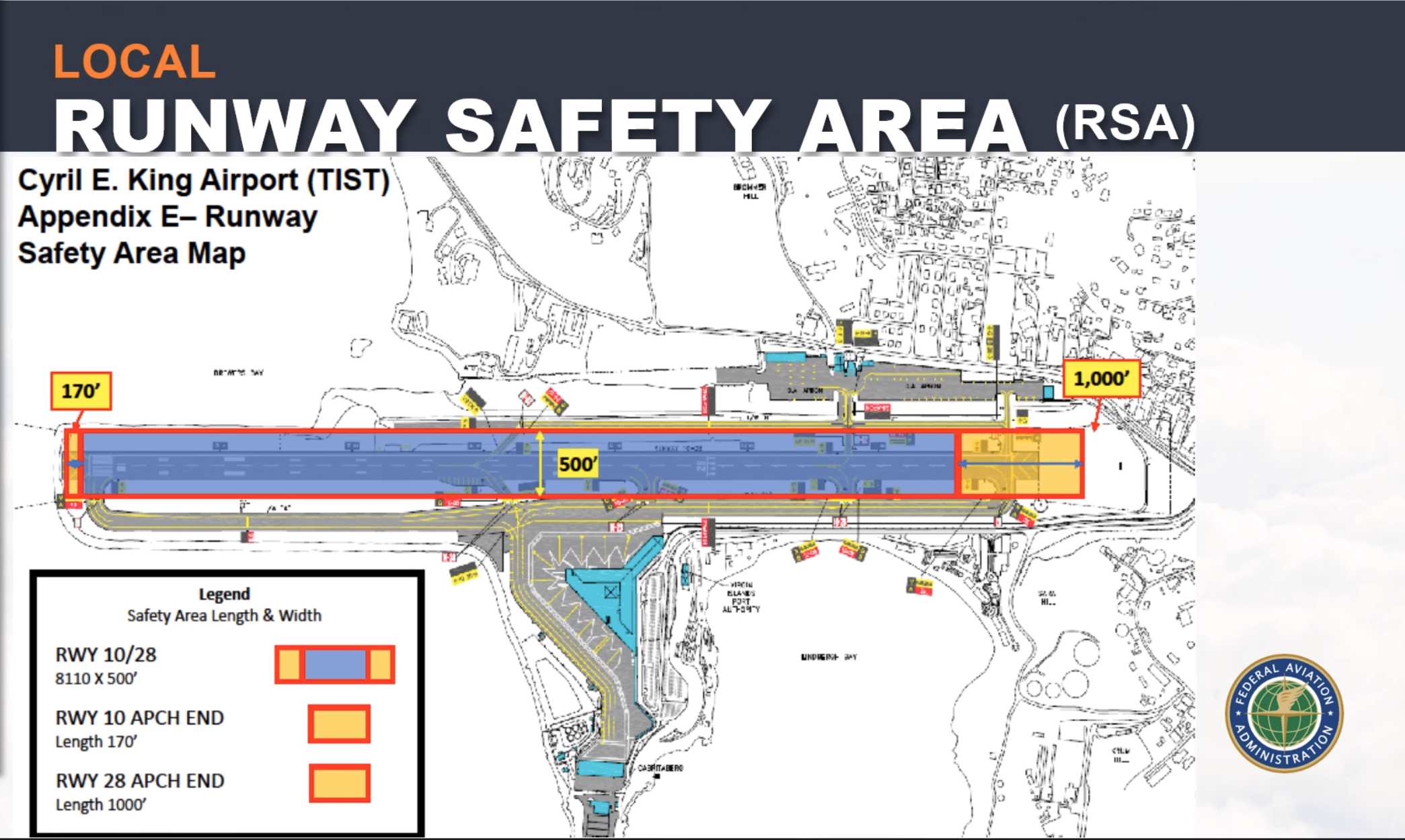
One sunny day in April, Cyril E. King Airport ground crew requested permission to drive from the taxiway out onto the runway. An air traffic controller responsible for the area misheard the question and responded: “Proceed as requested. Remain clear of Runway 10 at all times.” Hearing the word “clear,” the ground crew worker drove out onto the runway.
Although no one was hurt and no aircraft were impeded, airport safety officials took the incident very seriously, writing up a Runway Incursion report sent to the Federal Aviation Administration.
The air traffic controller should have verified the request by repeating it back and used the phrase “hold short” rather than “clear,” which could be mistaken as saying no traffic was in the area, said Nicholas Cicone, a St. Thomas air traffic controller and Local Safety Council officer.
“This is a big one here in St. Thomas as we have a lot of new guys in the tower that are learning the ropes from other facilities. And also, there is a dialect barrier that you have to get used to,” Cicone said during a briefing with airport officials, employees, and the FAA Thursday morning.
“The driver heard to proceed as requested after he requested to go on the runway and to remain clear. We never say ‘clear’ on ground control. That was really a big mistake there,” he said. “How we say it is: Hold short of Runway 10.”
That air traffic controller is no longer working on St. Thomas, Cicone said.
While those of us not in the air traffic control business may assume an airport tower is focused on what’s happening in the air, Cicone and other officials emphasized what happened on the ground was vital. Only a small portion of the two-hour interactive presentation Thursday focused on pilot error, such as landing at the wrong airport, on the wrong runway, or on a taxiway — none of which have happened at the one-runway St. Thomas airport in recent memory.
The only other runway incursion incident reported since 2022 was in November when a pilot failed to stop along the yellow taxiway line where instructed and crossed onto the runway as another aircraft was preparing to take off. Although the two planes were 3,000 feet apart, air traffic controllers immediately canceled takeoff clearance, Cicone said.
Even a few inches over the yellow line counts as a runway incursion, triggering a report to federal officials.
“That’s 3,000 feet too close,” he said.
Patrick Cieniewicz of the National Air Traffic Controllers Association urged constant communication with the tower for all pilots and ground crew.
“Keep no secrets,” Cieniewicz said.
The St. Thomas airport presents peculiarities not found at other airports. The western end of the runway juts out into waters where sea birds are drawn to feed. Wildlife specialists spend a fair bit of effort shooing away these birds, as well as mongoose, iguanas, dogs, and feral cats that make their way into restricted areas.
This same end of the airstrip also has a significantly shorter safety area than prescribed. While the 8,110-foot long, 500-foot wide runway has the traditional 1,000-foot safety area to the land-bound east, the western, sea-bound end is just 170 feet. Marked with buoys to warn boaters away, the shortened stretch required special FAA approval.
Airport Manager Jerome Sheridan said no plans were in place to lengthen the safety area, but the existing runways may be resurfaced in late 2024 or 2025.
Ground crews were vigilant in identifying any tiny crack in the runway asphalt — contrary to myths of an airstrip pockmarked with potholes, Sheridan said. But, high-quality concrete would be both smoother and more durable. So Sheridan and other officials were in discussion to replace the asphalt. How exactly it would work was still debatable. With just one runway, the airport couldn’t be closed while concrete was poured, dried, and painted. One thought was to potentially use the taxiway in the meantime. No decisions had been made, he said.
Thursday’s meeting was part of a Runway Safety Action Team report, where airport stakeholders come together to identify unique risks to surface safety. They discuss and develop plans to mitigate or eliminate risks. Representatives from the FAA’s air traffic organization, airlines, pilots, airport vehicle drivers and others were invited to participate.


